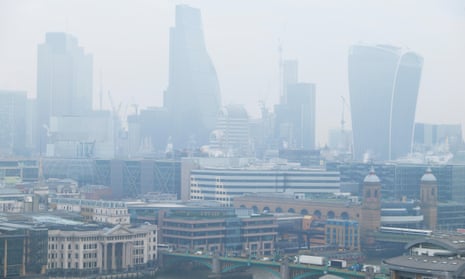Two million people in London are living with illegal air pollution, according to the most recent data. However, nitrogen dioxide levels are falling and could reach legal levels within six years.
In 2017, London saw its first breach of annual pollution limits just five days into the new year and in 2018 it occurred within a month. However, three months into 2019, no such breaches have taken place. In 2016, the last year in which Boris Johnson was mayor of London, there had been 43 breaches by this time.
The new data is an update of the London Atmospheric Emission Inventory, which now includes 2016, the latest year available. It shows 2 million people living in areas with toxic air, including 400,000 children.
It also shows that between 2013 and 2016, total nitrogen dioxide (NO2) emissions fell by 9%. However, over the same period, the number of primary schools in illegally polluted areas barely changed, going from 371 to 369, while the number of secondary schools affected grew from 81 to 86, according to City Hall.
Sadiq Khan, who has been mayor of London since May 2016, has moved the cleanest buses to the most polluted routes and introduced a charge for highly polluting vehicles that enter the city centre. This is being toughened from 8 April with the start of an ultra low emission zone (Ulez) that penalises more diesel cars, the primary source of NO2.
“From the very outset I have been crystal clear that I would do everything in my power to tackle London’s toxic air crisis,” said Khan. “The data I’ve published today gives an even clearer picture of the urgent need to take action.” He said the Ulez would be the first in the world to operate 24 hours a day, seven days a week.
Ministers have been defeated three times in the high court over the inadequacy of their national action plans. The latest plan, described by environmental lawyers as “pitiful”, revealed that air pollution was much worse than previously believed.
Air pollution causes at least 40,000 early deaths in the UK from lung and heart disease, but it is being linked to an increasing range of health impacts, from miscarriage to teenage psychosis.
“London needs effective measures to improve air quality to an acceptable level at which it is not having a negative influence on children’s health,” said Prof Frank Kelly at King’s College London. “I applaud the mayor and his team for taking the bold action needed to protect the health of London’s children.”
A recent KCL study looking at the rate of reduction in NO2 levels across London found that the trend between 2010 and 2016 under Johnson meant it would have taken 193 years to reach legal levels. Further KCL modelling indicates the new policies mean this time period has been reduced to just six years.
